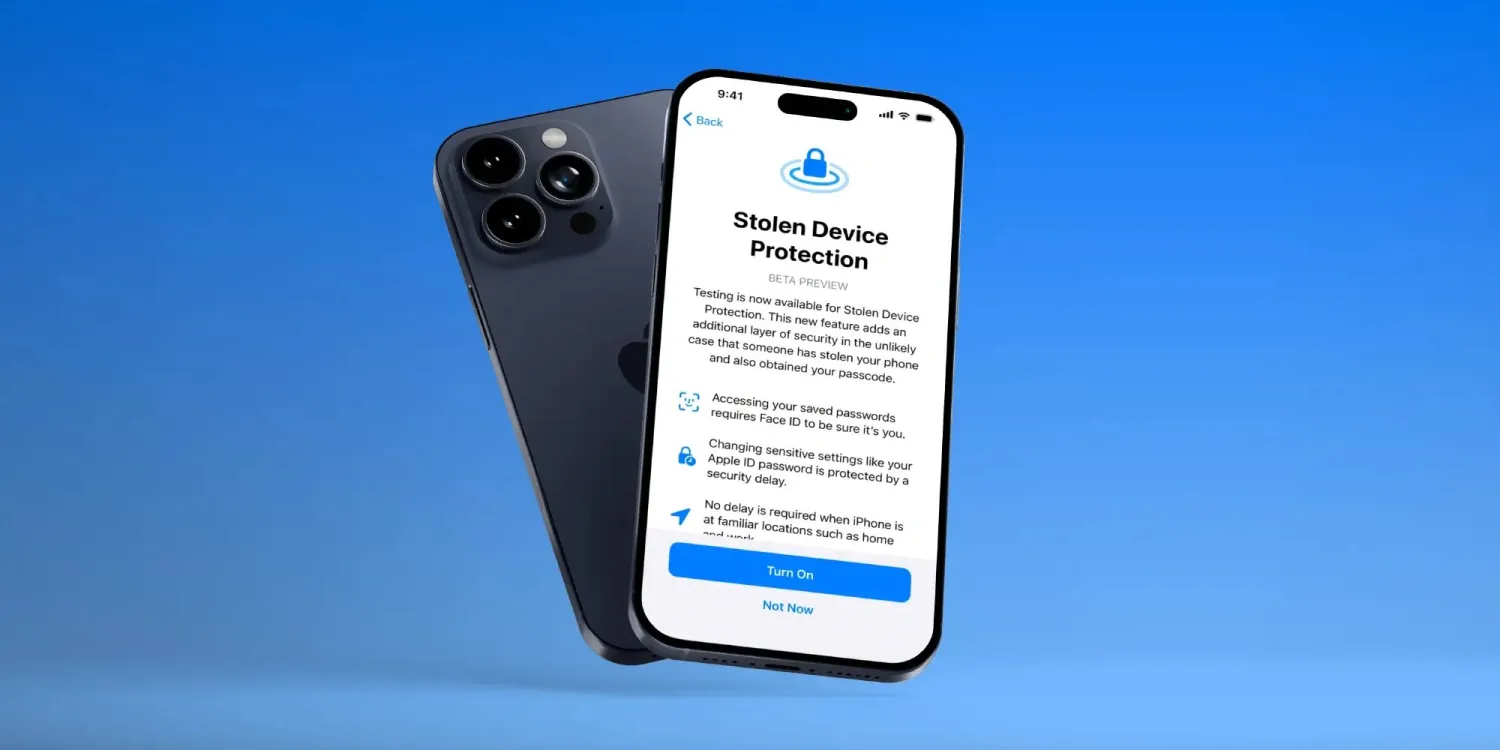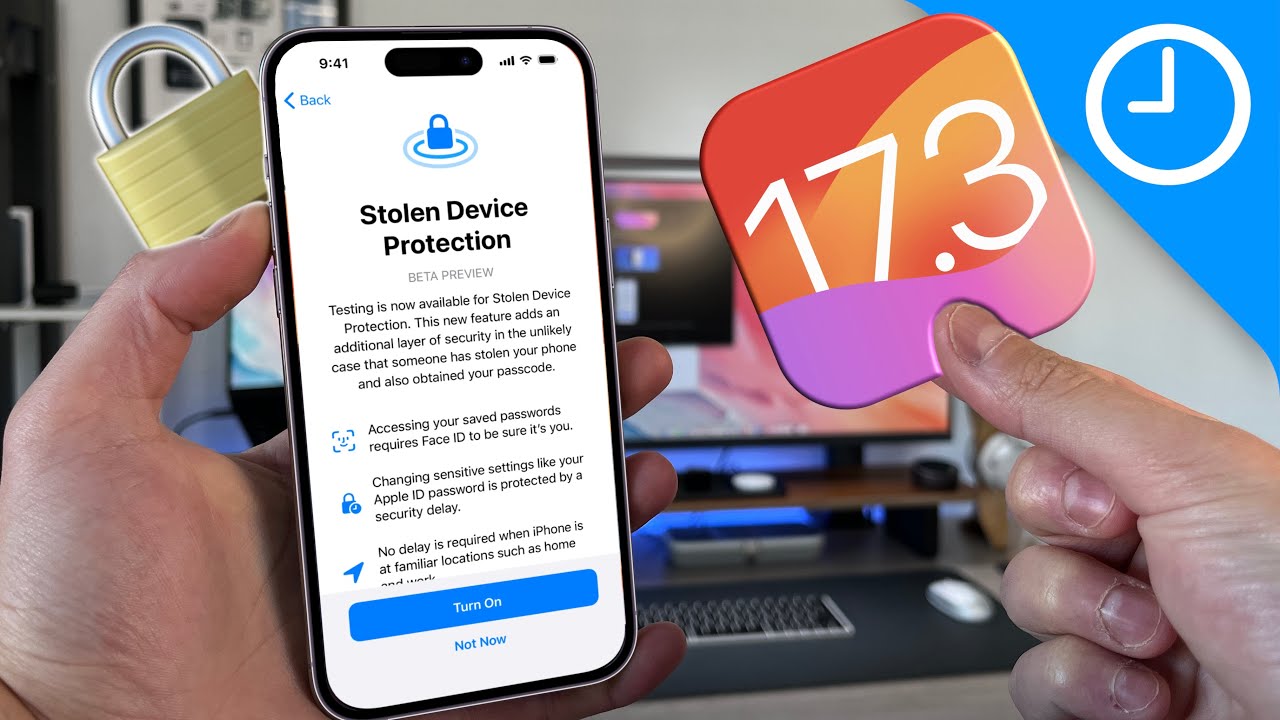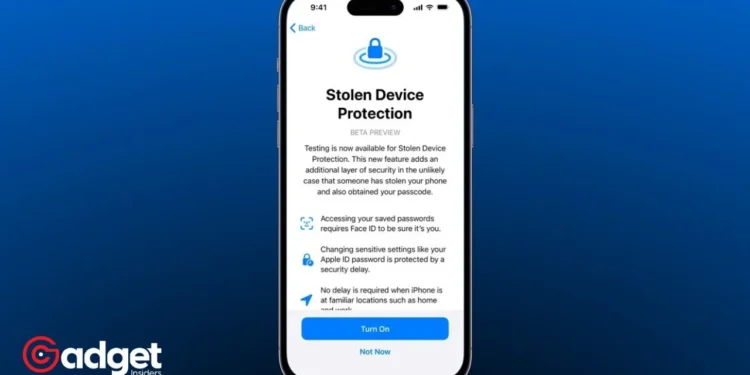In the ever-evolving landscape of technology, Apple has once again stepped up its game to safeguard its users against the rising threat of phone theft. With personal devices carrying more sensitive information than ever before, the introduction of a new security feature for Apple iPhone users is a welcome development. Apple’s latest update, which rolled out on January 22, has brought a significant enhancement to Apple iPhone security through the Stolen Device Protection feature. This addition is not just a tool; it’s a shield against potential data breaches and financial theft.

The Shield Against Data Theft: Understanding Stolen Device Protection
Imagine the distress of losing your Apple iPhone, compounded by the fear of someone accessing your data. Apple’s Stolen Device Protection feature is designed to mitigate these risks, acting as an emergency buffer while you take the necessary steps to recover your device. Once activated, this feature imposes a formidable barrier to unauthorized access, requiring a successful Face or Touch ID verification to unlock sensitive information such as your wallet and stored passcodes.
This feature is Apple’s response to the growing sophistication of thieves who, upon stealing a device, would likely attempt to access the owner’s financial resources. The tech giant has articulated that this security measure is intended to “prevent a thief from performing critical operations,” thus allowing the rightful owner to secure their Apple account and mark the device as lost.
New highlighting features in iOS 17.3.1
1. New Unity Wallpapers
2. Stolen Device Protection
Stolen Device Protection increases security of iPhone and Apple ID by requiring Face ID or Touch ID with no passcode fallback to perform certain actions.
3. Apple Music
Collaborative… pic.twitter.com/1H5yZzXSQA— Safwan Shaikh (@Ersafcr7) February 20, 2024
Apple iPhone: Navigating the Activation Process
For Apple iPhone users who haven’t yet activated this pivotal feature, the process is straightforward. Ensuring your device is updated to iOS 17.3 is the first step. Following this, users are advised to enable two-factor authentication under the ‘Password & Security’ settings. It’s essential to have both Face and Touch ID enabled, alongside the Find My feature, and to establish a device passcode if one hasn’t been set. Further enhancing the security net, enabling ‘Significant Locations’ in location services is recommended. The final step involves navigating to ‘Face ID & Passcode’ in the settings menu, entering your password, and toggling the ‘Stolen Device Protection’ to activate it.
Apple iPhone: Beyond Security
A noteworthy aspect of this feature is its sensitivity to the device’s location. Apple confirms that when the Apple iPhone is in familiar surroundings, such as home or work, the additional security steps are bypassed, allowing for the usual passcode use. However, in unfamiliar locations, the feature introduces an hour-long delay for password changes, providing the owner ample time to report the theft. This nuanced approach reflects Apple’s commitment to balancing security with user convenience.

Apple iPhone: A Step Forward in Personal Security
In an era where digital security is paramount, Apple’s introduction of the Stolen Device Protection feature is a testament to the company’s dedication to its users’ safety. By integrating sophisticated security measures with user-friendly processes, Apple not only enhances the security of its devices but also reinforces the trust of its user base. As we navigate the digital age, such advancements are not just features; they are essential tools in safeguarding our digital lives against the ever-present threat of theft and unauthorized access.









